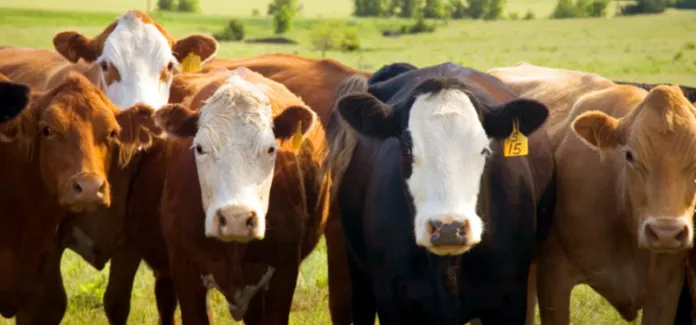Kansas State beef cattle experts offer tips on ways to reduce parasite loads in young animals
MANHATTAN, Kan. — Do the terms worms and life cycles bring back memories of biology class? Well in the case of beef cattle, understanding the life cycle of worms — otherwise known as internal parasites — is key to reducing health impacts in calves, say the experts at Kansas State University’s Beef Cattle Institute.
Joining in a discussion on a recent Cattle Chat podcast were parasitologists Jeba Chelladurai and Brian Herrin, who serve on faculty with the Department of Diagnostic Medicine and Pathobiology in K-State’s College of Veterinary Medicine.
“Parasites live in the gut of cattle,” said Brad White, veterinarian and BCI director. “They lay eggs while living in the cattle and then leave the body as feces that ends up in the pasture. Once in the pasture the larvae climb on the leaves and then can be consumed again by the grazer.”
White said the number of internal parasites being carried in the body of the beef animal will influence the overall health and weight gain of that infected animal.
“Cattle with a heavy parasite load fail to thrive and appear very thin,” said veterinarian Bob Larson.
Herrin said there are good treatment options for internal parasites on the market but the key is knowing which animals to treat and when.
“We have high quality dewormers but we want to make sure we are using them appropriately,” he said.
Not all cattle in the pasture carry the same parasite load, according to Chelladurai.
“Twenty percent of the animals in the pasture will carry 80% of the parasite load, so in a herd of 100 calves, producers can expect 20 will have most of the burden,” she said.
She added that calves, because of their developing immunity, are more significantly impacted by internal parasites than mature cattle.
“For calves, parasites are a big deal because their immunity hasn’t developed enough to fight off the parasites,” Chelladurai said.
Without doing a fecal egg count, it is hard to know which of the calves is carrying the parasite load, and therefore treating the calves as a group may be the most practical option Herrin said.
“With the majority of the operations, treating calves within the first three months is good and then follow that up one more time again within the year to keep the worm burden low so it doesn’t overwhelm the calves’ systems,” Herrin said.
Stocking rate on the pasture is another factor to watch, according to the experts.
“The more cattle in the pasture, the higher the likelihood that an animal will acquire an infection because of more eggs that are deposited in the pasture,” Chelladurai said.
Along with stocking rate, management can also influence the risk for internal parasites. Herrin said cattle that eat out of bunks or in a dry lot are less likely to be impacted by parasites than those that eat off the ground or graze in the pasture.
If producers follow a rotational grazing scheme, the timing of the rotation is critical, say the parasitologists.
“There needs to be a structured system because once the eggs pass into the feces, they take a few weeks to develop and if we have the timing wrong, infectious larvae might be peaking at the time when the cattle are put back on the pasture,” Herrin said.
White added that parasites don’t thrive in very cold temperatures or extremely hot weather so the timing of the treatment may be dictated by the climate of the region where the cattle live.
He said: “So when the weather is most miserable for people during the year, it will also have a detrimental impact on parasites.”
To hear the full discussion, listen to the Cattle Chat podcast online.
-30-
FOR PRINT PUBLICATIONS: Links used in this story
BCI Cattle Chat podcast, https://ksubci.org/2021/10/22/internal-parasites-when-to-deworm-calves-should-you-deworm-cows/
K State Research and Extension is a short name for the Kansas State University Agricultural Experiment Station and Cooperative Extension Service, a program designed to generate and distribute useful knowledge for the well being of Kansans. Supported by county, state, federal and private funds, the program has county extension offices, experiment fields, area extension offices and regional research centers statewide. Its headquarters is on the K State campus in Manhattan. For more information, visit www.ksre.ksu.edu. K-State Research and Extension is an equal opportunity provider and employer.
Story by:
Lisa Moser
785-532-2010
[email protected]
More information:
Jeba Chelladurai
785-532-0891
[email protected]
Brian Herrin
785-532-4430
[email protected]
Brad White
785-532-4243
[email protected]




